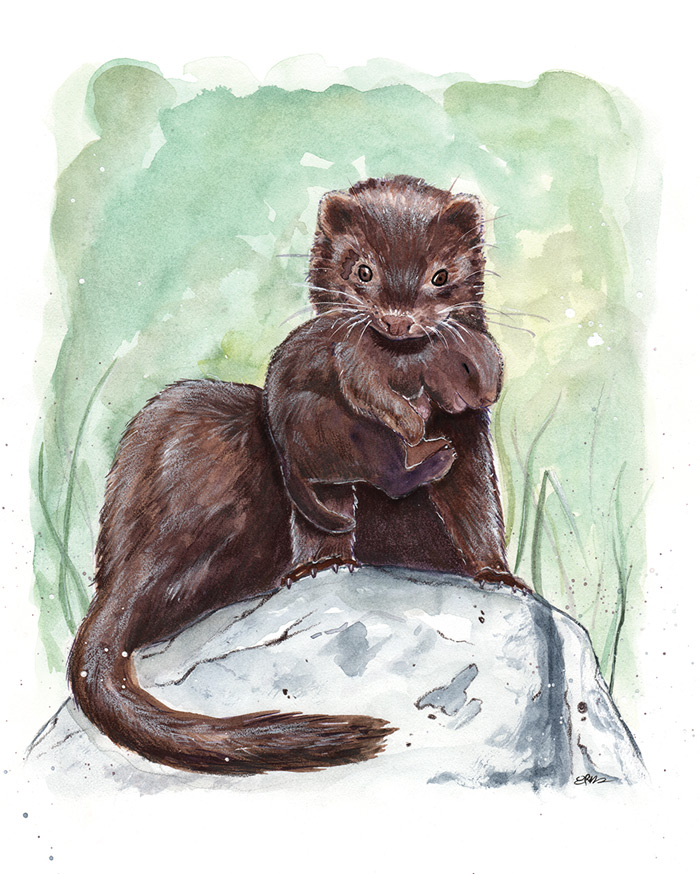Spend enough time alongside a trout stream, and you’re bound to make the acquaintance of some of the animals that reside along its banks. In the northeast corner of our state, the fields and forest that extend outward from these ribbons of water are home to deer, black bear, coyotes, fox, skunk, woodchuck, otter, mink, beaver, muskrat, cottontail rabbits, as well as mice, voles and moles. This is in addition to various species of snakes, turtles, frogs, toads and salamanders. During my time fishing for trout, I’ve encountered many of these creatures with whom I’ve shared the stream.

Last June, I was attempting to rouse the interest of a trout. This particular fish had been sipping mayflies a few feet from a steep bank that rose upward more than one hundred feet. A mixture of conifers and hardwoods grew from the side of the ravine that was studded with large boulders and the decaying trunks of fallen trees. As my fly rode upon the current, a chorus of squeaks and squeals emanated from the embankment on the far side of the stream. At first I assumed it was a red squirrel complaining about this or that, or perhaps a pair of chipmunks quarreling over territory, but when the chatter failed to abate, I scanned the wood to find a mink slinking under the trees and hopping over boulders high up on the trail at the top of the bank. The forest fell silent about the time I lost sight of the comely animal. A few moments later, the mink reappeared, working her way in the opposite direction from whence she came. That’s when I saw three tiny kits scrambling in single file behind their mother.
The trout continued to take mayflies that drifted along with the current, when to the consternation of their mother, first one, and then the other two kits tumbled down the hillside. Moments later the stillness of that June afternoon was again awash with cries from the three younger minks. While the trout’s attention remained on the occasional mayfly that continued to float down the river, the mother scrambled halfway down to her brood. She repeatedly raced a few feet back up the escarpment, while turning to see if her kits would follow. Instead, their wails intensified each time the adult turned back up the hillside.
Eventually, the mink seized on a different strategy. Grabbing a kit by the scruff of its neck, she transported the relieved youngster half way up the hillside, afterward returning to the remaining pups. But when she did so, the first kit followed her descent. Twice the mother returned one of her young to higher ground and twice the kit followed her back down the hill.
Clearly frustrated, the mother finally grabbed one of the young minks in her jaws and struggled to the very top of the hill. From there, she bobbed and weaved over the trail. All the while, the forest echoed with the protests of the two youngsters that remained below. Their cries continued, until after a number of minutes the mother reappeared along the trail. Working her way down the hill, she grabbed a second kit, once again making her way upward, soon disappearing from sight. The final member of the brood attempted to follow, but each time the little thing climbed over a boulder, it slipped back down into the brush, with a pitiful wail.
Although the mayflies that had drifted down with the current were now few and far between, the trout continued to rise whenever a bug entered its line of sight. Meanwhile, the remaining kit continued to whine in despair. A number of minutes followed without the mother returning. I wasn’t looking forward to the wounds that would be inflicted should a rescue be attempted. While thinking of wading past the trout and up the bank, I removed my shirt and wound it around my hand. It was about then that the adult appeared along the trail. After a few moments, she descended the ravine. I watched as she struggled up the steep grade with the last kit held firmly in her jaws.
By then, the trout had stopped rising.